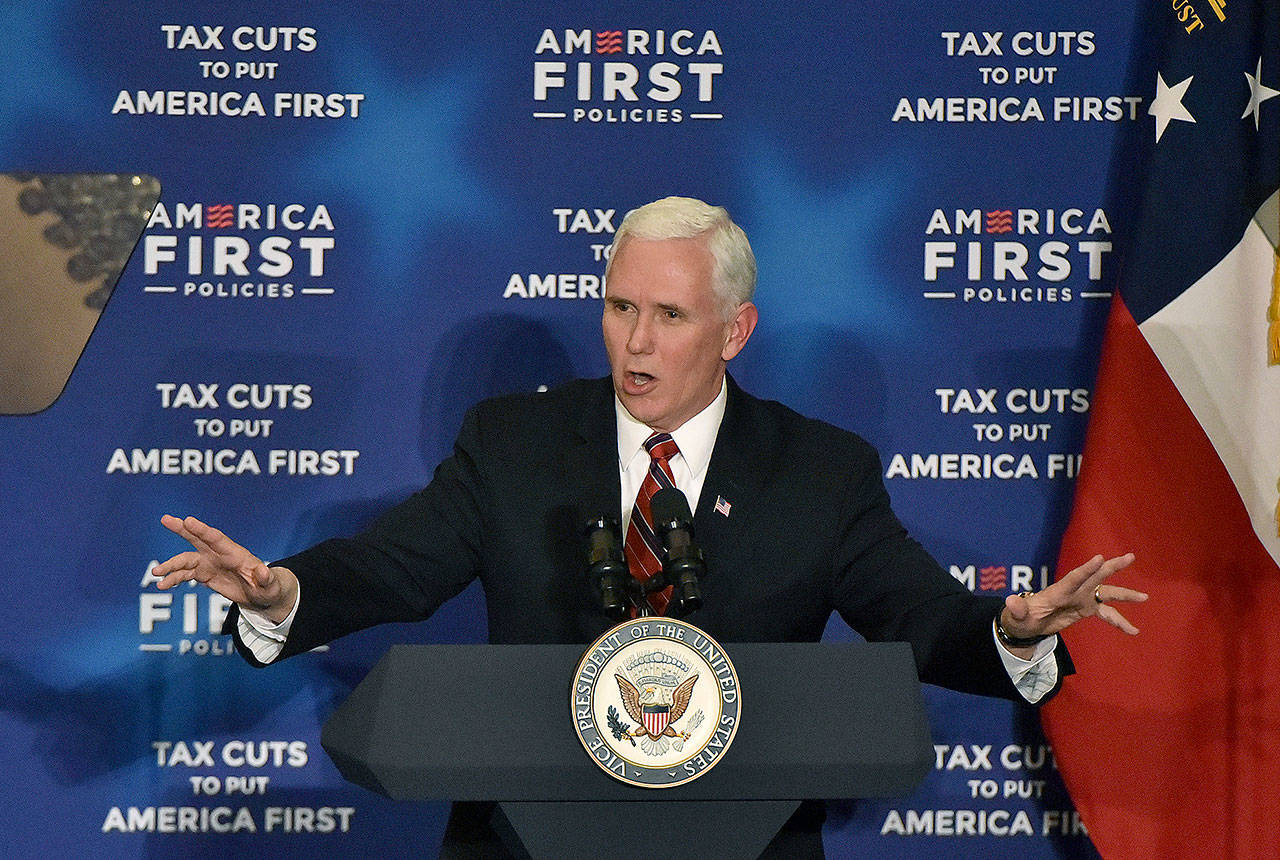By Jeff Stein / The Washington Post
The Republican tax law passed last fall will give the richest 1 percent of Americans an average personal income tax break of about $33,000, while the poorest Americans will receive an average personal income tax break of $40, according to a new study published this week by nonpartisan analysts.
The Tax Policy Center, a Washington think tank, has produced its first analysis of how the GOP law’s changes to personal income taxes alone — rather than that of the law overall — affect the rich and poor.
Previous TPC analyses have already looked at the overall distributional effects of the law, which included a giant tax cut to corporations and a reduction in the estate tax paid by the wealthiest families. The new TPC report isolates the impact of the law’s personal income taxes, suggesting that the corporate cut does not alone account for the law offering its biggest gains to wealthier Americans.
“While most of the corporate tax cuts flow to the top of the income distribution, what this shows is that even in the direct changes to the individual-side of the tax code, most of those changes are still being allocated to the top,” said Kim Rueben, a senior fellow at TPC.
The report shows that the majority of Americans in all 50 states will get a tax cut under the GOP law, but that the size of its benefits are uneven.
The biggest winners are the richest 1 percent of Americans, or those earning more than $732,800 every year. The smallest bump goes to the poorest income bracket, defined as earning under $25,000 annually.
The size of the break is bigger for those in the middle-income brackets. Those earning between $86,000 and $148,000 annually will get an average break of about $1,500, while those earning between $48,000 and $86,000 will get an average of $780.
Americans earning between $25,000 and $48,000 will get an average personal income tax break of $320, the report says.
The richest 1 percent will see its tax burden drop by 1.5 percent, while middle earners see theirs drop by 1.2 percent. The poorest Americans see the smallest change, as their taxes drop by 0.3 percent, according to TPC. A Pew Research Center report from this fall found that those earning $200,000 or more paid about 59 percent of federal income taxes.
When factoring in all the law’s provisions, including the corporate rate cut, TPC said the richest Americans get a tax break of $51,140, while the poorest Americans receive one of $60.
“This is getting your hands on the change people will see in their actual 1040s, but the pattern is pretty similar to what we see when we include all provisions in the tax law,” Rueben said.
The report comes as Republicans push the tax law as their signature legislative achievement from controlling both branches of Congress and the White House since the 2016 elections. Democrats have called the tax law a giveaway to corporations and the rich, while Republicans have defended it by saying it offers broad tax relief to millions of Americans and is encouraging business investment that will translate into higher wages.
The law’s personal income provisions will cut taxes for more than 60 percent of residents in all 50 U.S. states and the District of Columbia, according to the TPC analysis.
North Dakota has the most residents coming out ahead, as 75 percent of that state’s residents are projected to get a tax cut because of the personal income provisions. In Ohio, where Democratic Sen. Sherrod Brown is up for re-election, at least 69 percent of residents will get a tax cut under the GOP law.
Meanwhile, blue states such as New York, California and New Jersey are among those with the fewest beneficiaries of the changes to the tax law’s income provisions, although red states such as Georgia and Florida also have fewer beneficiaries than most. To raise revenue for its other cuts, the GOP tax law eliminated deductions that millions of taxpayers claimed and placed a $10,000 cap on the deductions of state and local property taxes. As a result, taxpayers in states with high local taxes — or states controlled by Democrats — are more likely to see tax hikes under the new code.
The analysis shows that even in these states most people will see their taxes cut. “The fact that most individuals in New Jersey and New York see their taxes go down might be surprising,” Rueben said. “A majority of people even there are seeing a tax cut rather than a tax increase.”
Residents of these blue states seeing a take hike are also more likely to face larger tax hikes than those facing tax hikes in red states. About 9 percent of residents of the District will get an average tax increase of $2,300, for instance, while the 3.1 percent of Alaska residents facing a tax hike will only pay an extra $730 on average.
Talk to us
> Give us your news tips.
> Send us a letter to the editor.
> More Herald contact information.

























